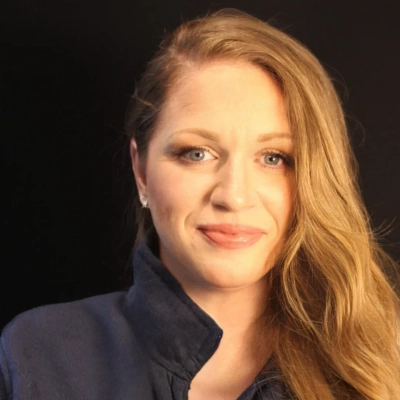What Technology Has Changed How You Manage Retirement Planning?
Retirement planning has undergone a significant transformation in recent years, thanks to groundbreaking technological advancements. From dynamic software to AI-driven forecasting, these innovations are reshaping how financial advisors and individuals approach long-term financial security. Drawing on insights from industry experts, this article explores the cutting-edge technologies that are revolutionizing retirement strategies and empowering more precise, flexible, and optimized planning for the future.
- Dynamic Software Revolutionizes Retirement Planning
- Cloud-Based Portals Enhance Client Collaboration
- Hybrid Robo-Advisory Platforms Optimize Strategies
- Cash Flow Forecasting Transforms Financial Projections
- Monte Carlo Simulations Provide Realistic Outcomes
- Embracing Chaos: Monte Carlo Reshapes Planning
- AI-Driven Forecasting Improves Precision and Flexibility
- Tech Integration Streamlines Retirement Asset Management
Dynamic Software Revolutionizes Retirement Planning
The game-changer for retirement planning has been the advent of sophisticated financial planning software, such as RightCapital and eMoney Advisor. These platforms enable us to expand beyond static spreadsheets and design dynamic, tailored retirement roadmaps for clients. For example, one client in her early 50s wants to retire early but is concerned about potential healthcare and tax burdens. With scenario modeling in RightCapital, I can run 12 different withdrawal strategies in just minutes, adjusting variables such as Roth conversions, Social Security timing, and market downturns. In this case, the software determined that delaying Social Security until age 70 while doing partial Roth conversions during low-income years would result in $18,000 more in after-tax retirement income a year -- a conclusion that would have taken weeks to calculate manually. This level of precision builds incredible client confidence.
What's revolutionary about these tools is their ability to collaborate and visualize in real-time. Research reveals that those using eMoney's interactive dashboards to track progress were 43% more likely to stay on track through market volatility than those getting quarterly statements. The syncing capability with investment accounts, of course, and the software's ability to automatically adjust projections -- recalculation of safe withdrawal rates, for instance, after a dip in the value of a portfolio -- have turned planning into a continuous conversation rather than an annual event. For advisors, the real prize is that it affords efficiency at a scale that may reduce plan preparation times by 60%, allowing them to spend more time coaching the behavioral aspects and less time crunching numbers.

Cloud-Based Portals Enhance Client Collaboration
One of the most impactful technologies I've implemented in recent years is a secure, cloud-based client portal where clients can view their retirement plan, upload documents, monitor investment performance, and communicate directly with me, all in one centralized hub. This has completely changed the way we collaborate and engage throughout the retirement planning process. Before adopting this system, most clients would only interact with their financial plan during annual reviews, which meant major changes or opportunities could go unnoticed for months. Now, with 24/7 access to their financial dashboards, clients are reviewing their progress more frequently and staying actively involved in their plan.
The increased transparency and real-time visibility have made retirement planning more fluid and dynamic. Clients can report changes in income, unexpected expenses, or shifting retirement timelines as they happen, and I can respond with timely strategy adjustments. This allows for much more accurate, personalized, and proactive planning. Rather than reacting to what happened last year, we're building strategies based on what's happening now.
From my perspective, the portal also improves efficiency and service quality. It eliminates back-and-forth document requests, supports secure file sharing, and streamlines updates. It saves time but more importantly, it builds trust. Clients feel confident knowing their financial picture is organized, current, and easily accessible. What used to feel like a once-a-year planning task is now a continuous, collaborative experience. That shift has helped my clients feel more empowered, and it's deepened their understanding of how every small decision today impacts their retirement security tomorrow.
If you are including only one link, I would appreciate it if you could link to my company's website instead of my LinkedIn profile.

Hybrid Robo-Advisory Platforms Optimize Strategies
The integration of robo-advisory platforms with traditional retirement planning tools has completely transformed how I manage both short- and long-term financial strategies for clients. These hybrid systems allow for automation of critical functions like portfolio rebalancing, tax-loss harvesting, and personalized risk adjustments, tasks that used to require significant manual input and time. Now, they're executed with precision and consistency, freeing up capacity for more strategic, human-focused advising. For clients in their peak earning years, typically between their 30s and 50s, this blend of automation and customization creates a powerful retirement planning experience. They benefit from low-cost, algorithm-driven investment management, but still have access to real-time financial coaching, plan adjustments, and scenario modeling based on their unique goals.
What makes this hybrid model so effective is the ability to monitor and adapt. I can quickly assess whether a portfolio is staying within a client's risk tolerance, track alignment with retirement timelines, and make strategic changes without delay. Clients don't have to wait until an annual review to make adjustments; the platform provides alerts and dashboards that allow both of us to stay engaged continuously. This is especially important during volatile markets, where reaction time and discipline matter most.
Retirement planning today is no longer about setting it and forgetting it. It's an evolving process that benefits from technology doing the heavy lifting on the back end, while advisors like myself focus on coaching through major life decisions, behavioral guidance, and holistic planning. These tools allow me to deliver better results with more consistency, which ultimately builds deeper trust and stronger long-term relationships with my clients.
Request: If you are including only one link, I would appreciate it if you could link to my company's website instead of my LinkedIn profile.
Cash Flow Forecasting Transforms Financial Projections
One tool that has dramatically changed the way I manage retirement planning is dynamic cash flow forecasting software. In the past, many retirement plans were built on overly simplified, static projections, assuming a flat rate of return, fixed expenses, and little variability year to year. That approach worked in theory, but it didn't reflect the way people actually live, or how financial markets behave. Today, with modern planning platforms, I can input a wide range of variables including fluctuating expenses, changing tax brackets, inflation adjustments, and healthcare costs, which are often underestimated in retirement planning.
What makes this technology so valuable is its ability to simulate real-life "what-if" scenarios. I can instantly show a client the long-term impact of retiring at 62 versus 65, increasing their annual travel budget by $5,000, or even enduring a market downturn early in retirement. It transforms retirement planning into a living, adaptable process instead of a one-time projection. Clients are no longer overwhelmed by numbers; they're engaged, asking better questions, and making more informed decisions because they can actually see the financial trade-offs in action.
This kind of interactive modeling has also helped reduce anxiety. A major reason people fear retirement is the unknown: "Will I run out of money?" or "What if inflation eats into my savings?" By offering a dynamic, visual representation of their financial future, clients feel empowered rather than uncertain. They can adjust their strategies with confidence, knowing their plan is flexible and built to absorb life's unpredictability. For me, this software has completely reshaped the planning conversation; it's no longer about static targets, but about building a retirement strategy that can evolve with you.
If you are including only one link, I would appreciate it if you could link to my company's website instead of my LinkedIn profile.
Monte Carlo Simulations Provide Realistic Outcomes
One piece of technology that has completely reshaped the retirement planning conversation is Monte Carlo simulation software. In the past, we relied on static projections using a fixed average return assumption, an approach that failed to account for the uncertainty and variability of real-world markets. Now, using Monte Carlo simulations, I can model thousands of potential market scenarios that reflect both positive and negative fluctuations over time. These simulations incorporate volatility, inflation, sequence of returns risk, and longevity, providing a much more dynamic and realistic view of a client's financial future.
What this means in practice is that I can show clients the probability of success for their retirement plan, not just an estimated outcome. For example, instead of saying, "You'll be fine if you earn 6% annually," I can say, "Based on 1,000 potential outcomes, your current plan succeeds 82% of the time." That's a powerful shift in mindset. Clients start to understand that retirement planning is not about reaching a single number; it's about building a resilient plan that holds up under uncertainty.
This tool has become especially valuable during volatile or inflationary periods. Clients can see how early market losses or high living costs could impact their long-term projections, which leads to more informed and proactive decisions, like adjusting withdrawal rates, rebalancing portfolios, or delaying retirement by a year or two. It has also helped reduce emotional decision-making during market downturns because clients have already seen what tough scenarios might look like.
Monte Carlo simulations bring clarity, realism, and depth to the retirement planning process. They move the conversation from guesswork to probability-based guidance, which creates more confidence and trust in the plan itself.
If you are including only one link, I would appreciate it if you could link to my company's website instead of my LinkedIn profile.
Embracing Chaos: Monte Carlo Reshapes Planning
One piece of technology that has completely revolutionized retirement planning for me is Monte Carlo simulation software.
Let me be direct. The traditional models we all grew up with—linear projections, static returns—are obsolete. Or at least, they should be. They're simplistic, misleading, and potentially dangerous. They provide clients with a comforting narrative that everything will be fine, based on average returns and unrealistic inflation assumptions. However, life doesn't unfold in averages. Markets don't conform to your plan.
Monte Carlo doesn't pretend things are stable. It embraces chaos, intentionally. It runs thousands of scenarios—bull runs, bear markets, interest rate spikes, black swan events—and forces you to confront how your retirement plan holds up under pressure. It's like stress-testing your future. And most people's plans don't pass the test. That's when the real work begins.
I use RightCapital and eMoney Advisor. Both have robust Monte Carlo engines. And here's the crucial point: clients finally understand. When they see their "probability of success" percentage plummet with early withdrawals or a premature retirement age, the room grows quiet. That's when you have leverage—not to upsell, but to promote honesty, adjust expectations, and introduce alternatives.
Here's a real example from last year: a client wanted to retire at 60 with a $2.5M portfolio. He thought he was set. We ran the simulation. His success rate was under 60%. He panicked. I didn't. We reallocated, incorporated annuities, adjusted his withdrawal strategy, and delayed retirement by two years. We ran it again. He achieved a 91% success rate. Now he sleeps peacefully at night.
In conclusion, Monte Carlo isn't perfect. But it's the first step to injecting reality into a system overwhelmed by fantasy. You don't need clients to feel good. You need them to get serious. This accomplishes that goal.

AI-Driven Forecasting Improves Precision and Flexibility
Artificial intelligence has changed how we approach retirement planning for our clients. One of the most useful tools we've worked with is AI-driven financial forecasting. It takes in large amounts of data--things like income, expenses, assets, and tax exposure--and builds a clear picture of the best steps forward. I've seen it give younger entrepreneurs flexible, growth-oriented plans while helping older business owners find safer, tax-efficient strategies for the final stretch toward retirement. The difference is precision. These models don't just guess; they keep learning and adjusting.
I had a conversation about this with Elmo Taddeo from Parachute, who's also a big believer in using machine learning in financial planning. He shared how his team ran a client's scenario through an AI platform that spotted a potential risk in their investment allocation. The client would've overlooked it manually. With a few small changes, they reduced exposure and increased projected returns. We've seen similar results with our clients. AI spots patterns we miss, especially when tax laws or markets shift. That's where real savings and smarter decisions come in.
For entrepreneurs, time is everything. You shouldn't have to monitor your retirement plan daily. AI handles the data-crunching, so you can focus on growing your business. After entering your information, the system keeps working in the background. It watches market changes, makes predictions, and finds opportunities to save or grow. If you ever want to test a specific scenario--say, what happens if you sell your company in five years--the AI can show you the numbers instantly. My advice: don't wait to get started. The sooner you feed good data into a smart system, the better prepared you'll be when it's time to step away.
Tech Integration Streamlines Retirement Asset Management
The advent of sophisticated financial planning software has revolutionized retirement planning for many professionals in the finance sector. These tools offer comprehensive capabilities allowing for thorough projections, scenario analysis, and asset allocation, which help tailor strategies to individual client needs. For example, software like Monte Carlo simulations can show a range of possible investment outcomes based on random variables, providing clients with a clearer picture of potential risks and rewards. This technology not only enhances accuracy in predictions but also improves client communications by making complex data easily understandable.
Another significant change is the integration of various financial accounts into a single platform, which streamlines monitoring and managing of a client's assets. It's especially vital as people often have multiple investment accounts, properties, and other assets that contribute to their retirement savings. By having a consolidated view, financial advisors can make more informed decisions, adjust strategies promptly, and offer more personalized advice. Ultimately, these technological tools help build stronger trust and transparency between clients and advisors, paving the way for more secure financial futures.






